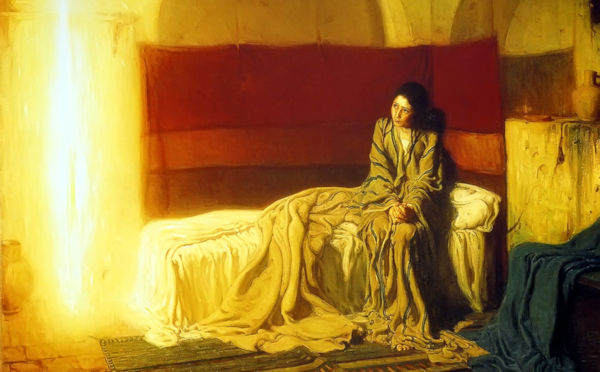The Rev. Jack Harnish invites looking at Mary and the Magnificat as a “song of a strong women.”
REV. JACK HARNISH
Michigan Conference Communications
I grew up in a staunchly Protestant family in a staunchly Protestant town with six Protestant and one Roman Catholic Churches. As a kid, I can remember driving past the Immaculate Conception Church on Sunday morning wondering what was going on in there. I had no idea what the “Veneration of Mary” or the Immaculate Conception was all about, but I knew we didn’t want to be part of it. Over the years, I had to break out of some of those childhood prejudices and open my heart to what Mary might mean for my own spiritual journey as well as the long history of the church. One of my favorite images of Mary and the Annunciation comes from the work of African American artist Henry Ossawa Tanner. (see image above)
But in the light of the seemingly daily revelations of the abuse of women by men in positions of power, I’ve been thinking about what it might mean to find a “Mary for Today.” Perhaps we need to take a new look at the song of the “Magnificat” and hear it in a new way. Rather than “gentle Mary meek and mild”, can we hear it as the song of a strong woman, a woman of determination who is willing to stand her ground with dignity and integrity?
She begins with overflowing praise: “My soul magnifies the Lord and my spirit rejoices in God my Savior.” But don’t stop there. In the next stanza she sings with boldness: “God has shown strength with his arm. God has scattered the proud and brought down the powerful and lifted up the lowly.” Hardly sounds like gentle Mary meek and mild. “God has filled the hungry with good things and the rich God has sent away empty.” Try singing that in the halls of Congress this week. Rather than humble submission, here is a woman who takes her stand. A woman who persisted!
I posted a request on Facebook asking for images of a powerful Mary. Of course, one of my friends couldn’t resist a snapshot of Tina Turner singing “Proud Mary.”
But this block print interprets the “Magnificat” in a literal way. Click here to see image. Here is a woman who raises her fist in defiance against the powers of her day, confronting the powerful and proud and calling for justice for the poor and lowly.
Sure enough, come Christmas Eve we will still pause in wonder before the beautiful tableau of the Virgin Mother and her baby wrapped in swaddling cloths and laying in a manger sleeping in heavenly peace. The image of Mary on the Silent Night will speak to our hearts and warm our souls. But maybe this year we need to see a different Mary. Maybe this year we need to see her as the model of a strong, determined woman who knows who she is and holds her ground. Maybe this year of all years, we need to stand with Mary for the sake of all women, for the sake of the hungry and the lowly, the poor and the needy, for the sake of other refugee mothers fleeing with their children. Maybe we need to stand with Mary for the sake of our mothers and sisters, our daughters and granddaughters, our colleagues and co-workers.
Maybe this is the Mary we need today.
~Note: ~”The Annunciation,” painting by Henry Ossawa Tanner/[Public domain], via Wikimedia
Last Updated on December 13, 2017

